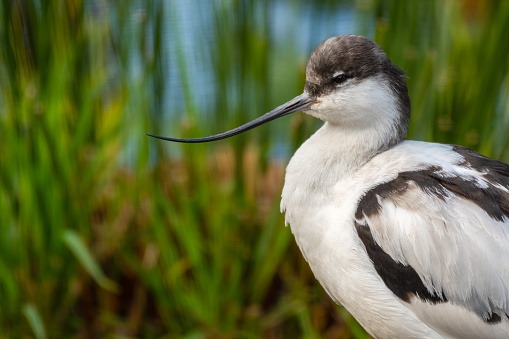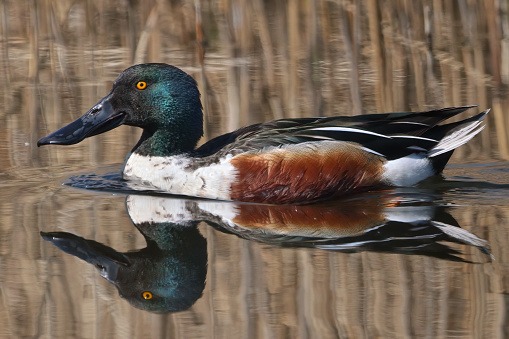Flamingos, the Magnificent pink birds.
Trying not to sound stereotypical, I would say MOST 6-year-old girls love the colour PINK in everything they do. Well, I was and still am that girl. Although the intensity of my love for pink has reduced, back in those days, I was the diva who would bedazzle all my artwork using pink. Many of us have grown up embarrassed of that phase in life, but now that we know better that there is nothing to be guilty about, let’s embrace it. My love for the colour pink brought me closer to birds and wildlife. More importantly, it opened a whole new world for me to explore as a city girl, to which exposure was not very natural.
Wondering, how did that happen? Not too long ago, students from a, reputable college came to our school to conduct research. The research students chose the first standard students to be their victims. Since I was six years old, I don’t remember the actual purpose of their study. But with whatever I can remember, I am convinced it had to do something with city student’s mental picture concerning birds. To derive results, they asked us to draw pictures of birds which they would analyze to conclude their research. No sooner we got our drawing sheets and colours, we were at it!! Like our lives depend on it. And we were done as quickly as we started. All of our drawings were different and unique. Some were coloured, a few were black and white drawings, and some were only symbols (like V V V). My drawing consisted of a bird that looked like a pigeon, with a beak, legs and wings, but OBVIOUSLY, the bird was PINK in colour.
As protocol, the drawing sheets were collected back from us and handed over to the research students. After drawing, for a verbal explanation, all the participants were call for an interviewed. They asked questions such as, ‘Can you describe the bird drawn in the picture? What are the birds doing?’. ‘Where do you see birds in your daily life?’. ‘What is the most significant property of the bird for you?’. Lastly, a particular question just for me, ‘Have you seen a pink bird anywhere in this city?’ I was dumbfounded by my stupidity. Blinded by glamour of the colour, I had completely ignored reality. After replying with a disappointing NO I left the room. After hours of feeling embarrassed about what had happened, finally, when the internet started (Back in those days, the internet only worked from 7 pm to 7 am at our house) I decided to SEARCH for a pink bird, because I could not believe there isn’t one.
Identifying the Flamingos for the first time: –
There were all kinds of pink-coloured birds on the internet. I wondered why I couldn’t see these birds around. That’s when I searched bean more geography-specific (Birds around Mumbai).
Flamingos took over the internet gallery. Elegant birds with uncommonly long necks and stilt-like legs. Their beaks were gigantic and curved downwards. They did not look like the everyday birds generally observed around the city. I had to see a video of them flying to convince myself that they were birds. The image showed a flock of flamingos dancing and flashing tints and shades of pink. My mom made me realize there were two different types of Flamingos in that picture, as few were more pigmented than the others.
Later in life, as a part of my studies, I learned the scientific name of the two different types of Flamingos.
- Phoenicopterus roseus, also known as the Greater Flamingo.
- Phoeniconaias minor, also known as the Lesser Flamingo.
These are the only two species of Flamingos observed in the Indian subcontinent. Visually also, there are differences between both species. Greater Flamingos, just as the name characterizes, are larger than the Lesser Flamingos. Adults of greater are mainly white, with only their primary and secondary coverts showing pink pigmentation. Greater’s beak is pale pink with a prominent black tip. Lesser’s plumage is more pigmented with rosy pink colour all over. Their smaller beak appears to be dark black in colour with patches of pink. You may also see some juvenile birds in the flock. You can distinguish them by their beaks and size, but by the colour, they display only browns and greys.


From where does the coloration come?
Scientists studying avian coloration were always intrigued by Flamingos. The adult Flamingos of all six species from all over the world have rosy plumage. So, the scientist thought it could be because the foraging habits of all the flamingos are also not veritably different. The diet consists of nematodes, annelids, crustaceans, mollusks, aquatic insects (both adult and larvae), small fishes, microalgae, seeds, and other plant material. Thus, studies were conducted on Flamingos (physiological processes) to study the role of carotenoids in their coloration. Carotenoids are pigments produced by plants, fungi, some bacteria, and a few aphids and spider mites.
It was confirmed after analyses that the red and pink colorations in the plumage and bare parts of flamingos are due to the carotenoids the birds obtain from their diets. The birds also possess an efficient metabolic capacity to transform carotenoids from one to other.
A flock of confined Flamingos received a diet with no carotenoids, there was a gradual decrease in blood carotenoids, and when the diet was supplemented with β-carotene, blood carotenoid levels recovered, so did the pigmentation.
Most animals (like Flamingos) cannot synthesize carotenoids and thus have to acquire them from their diet. Since ingestion of carotenoids has to be with food, plumage colour may have a signaling function by communicating the ability to obtain resources. That indicates the more intensively coloured individuals may be of higher quality. Consequently, those individuals may be found in the best foraging patches or may be preferred as mates by individuals of the opposite sex.
Where to find the Flamingos?
Concerning birds, there is an umbrella term used for certain types called the Waders. Flamingos are placed under this umbrella term because of their morphology and feeding habits. Wetlands and areas in coastal regions support a congregation of migratory and resident species of wading birds, as it has high nutritional values and productivity. Flamingos use these wetlands as their breeding, foraging, and roosting sites. The physicochemical processes of the flamingo are influenced by the abundance of these organisms.
Think of it as a blessing or not, but wetlands and coastal waters around Mumbai are prone to Eutrophication. Eutrophication refers to water pollution caused by excess nutrient elements (e.g, N, P, K) from human activities, resulting in excess algal blooms. The source of these pollutants are fertilizer runoffs and untreated sewage and effluent water. An abundance of algal blooms attracts a large number of Flamingos to Mumbai. The research and studies on the harmful effects of the consumption of these algae are in progress in hopes that it’s not too late till the results are derived.
Thane creek is one of the many visitable spots to watch the Flamingos. In Thane creek itself, two places that conduct Flamingo boat safaris are the Bhandup pumping station and the Coastal and marine biodiversity center at Airoli. Both are astonishing destinations to explore mangrove flora and, wading birds including forest birds. (The Flamingos, Avocets, Black winged Stilts, Sandpipers, Whistling ducks, Northern shovelers, Godwits, Golden orioles, Bee eaters, Sunbirds, Flowerpecker’s, White throated Kingfisher, Common Kingfisher, Long tailed Shrike, Southern Coucal, Asian Koel, etc. )
Author: – Ms. Vidushi Jaiswal.
References: https://ebird.org/home


Give yourself and your children a chance to appraise the diversity around your city and book your trail/safari with us.
For overnight trip to watch the Flamingos
